![]() This week, we are going to discuss isolated Yoctopuce modules. What is this famous isolation? How is it implemented? What's its use? What are the consequences?
This week, we are going to discuss isolated Yoctopuce modules. What is this famous isolation? How is it implemented? What's its use? What are the consequences?
In electronics, what's an isolation?
Isolated Yoctopuce modules are modules divided into two parts: the USB part and the processor on one side, and the "business" part such as a sensor or an actuator on the other side. In between, there is an isolation barrier which prevents the current to directly go from one part to the other. This is called a galvanic isolation.
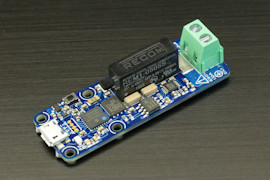
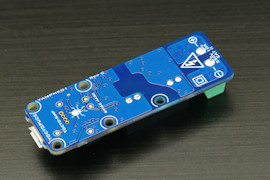
Example: The Yocto-Amp, it's easy to guess where the isolation barrier is
How does it work?
Although the aim of a galvanic isolation is to prevent electric current to go from one side to the other, we must still make electric signals go through this barrier, and this for two reasons:
To communicate between the two parts
The isolated part often contains either a sensor which must transmit its measures to the part containing the microprocessor, or an actuator which must receive commands from the microprocessor. To do so, one can use optocouplers, which pass the information from one side to the other as light. At Yoctopuce, we often use Silicon Labs isolators of the Si8600 series which use radio signals to communicate through the isolation barrier.
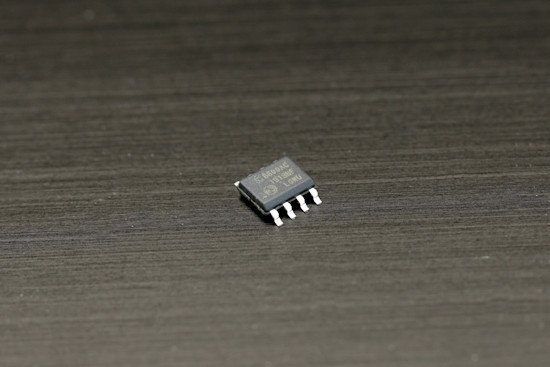
You can find this signal isolator on many isolated Yoctopuce products
To power the isolated part
Rather logically, the sensor part needs a power supply. The isolators also need a power supply on each side of the barrier to work. The traditional method to pass a power supply through a galvanic isolation consists in using a transformer. A transformer is made of two interlaced coils, an alternative current flowing in one coil induces an alternative current in the second coil. However, the USB electronics works with direct current, so Yoctopuce uses isolated DC/DC modules which, schematically, generate alternative current from direct current, make it go through a mini-transformer, and rectify the alternative current coming at the other end into direct current.
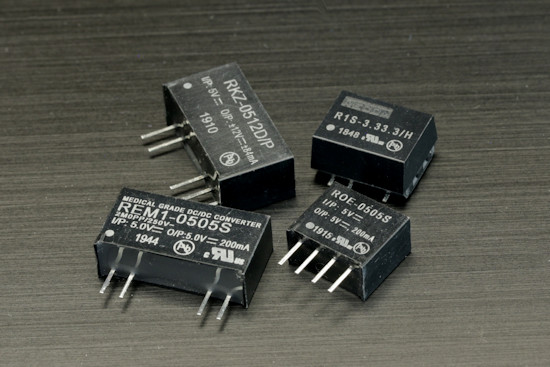
The isolated DC/DC converters which are often used in Yoctopuce modules
Note that an isolation barrier fulfils its role up to a given voltage. If the potential difference between the two parts is above the limit, the electricity is going to jump from one part to the other, usually as an electric arc, and when this happens it's never good.
Isolation, what's the need?
There are two main incentives to add a galvanic isolation in a Yoctopuce module.
Safety
The safety of the user is the main reason which prompts a manufacturer to conceive an isolated product. For example, on a Yoctopuce module which can be connected to a circuit which is itself directly connected to the mains, it is essential that, whatever happens, current from the mains can never be found on the USB part: no one wants to be electrocuted by their own mouse. Therefore, when the isolated part is likely to be connected to the mains, not only there must be a minimal distance between the components located on either sides of the barrier, but the isolation barrier must be designed to hold 3000V during at least one minute. Note that this doesn't mean that the module will work up to 3000V, the electronics in the isolated part is very certainly going to be destroyed, but the surge won't go to the USB side.
Ground currents
The second reason which can prompt manufacturer to design an isolation barrier are ground currents. If the circuit must be connected to a ground with a potential which is different than that of the USB ground, ground currents will appear. These currents risk perturbing the proper working of the electronics, and in extreme case burn it out. We had the opportunity to describe the effect of ground currents on the Yocto-Thermocouple. However, when the two parts are isolated, each side of the barrier can have its own independent ground. In the case of an isolation designed only to guaranty the proper working of the product, one calls it a functional isolation.
The case of relays
By design, electro-magnetic relays are isolated: the command part is electrically isolated from the switched part. But there is a pitfall. It's not because an electro-magnetic relay proudly displays 250V on its enclosure that you can use it to switch current from the mains in complete safety. Remember: in the case of the mains, the isolation barrier must hold 3000V during one minute and there is a distance that must be respected between the two sides of the barrier, even inside the relay. This is why we recommend to rather use the Yocto-PowerRelay-V3 and Yocto-MaxiPowerRelay to switch circuits directly connected to the mains.
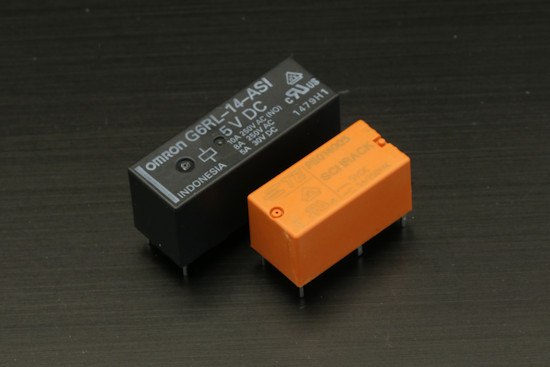
At almost the same power, there is a good reason why the black relay is longer than the orange one
Some disadvantages
On an electric circuit, an isolation barrier presents a number of advantages, but also some disadvantages. The electronic components required to pass the signals and the power supply through the isolation barrier are rather expensive and bulky. Moreover, the DC/DC are components which work with high frequencies, and this tends to create EMI and forces us to use filters, which increase still more the size and the prize of the finished product. Finally, DC/DC rarely have a performance ratio above 90%, thus an isolated circuit consumes always more that its non-isolated version.
Conclusion
There are entire categories of isolated electronic products, but we can often sort them into two categories: those for which you simply can't negotiate a safety isolation, typically all those which connect directly to the mains. And those for which the presence of a simple functional isolation barrier is a proof of quality, for example the products which are used to interface two systems, which can be powered by different sources, or simply connected to different grounds.


